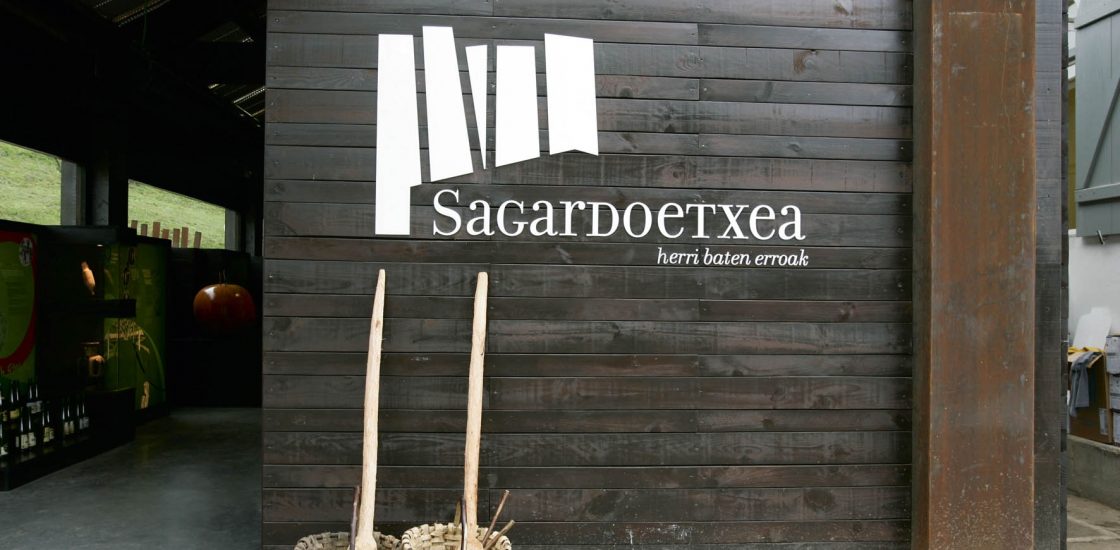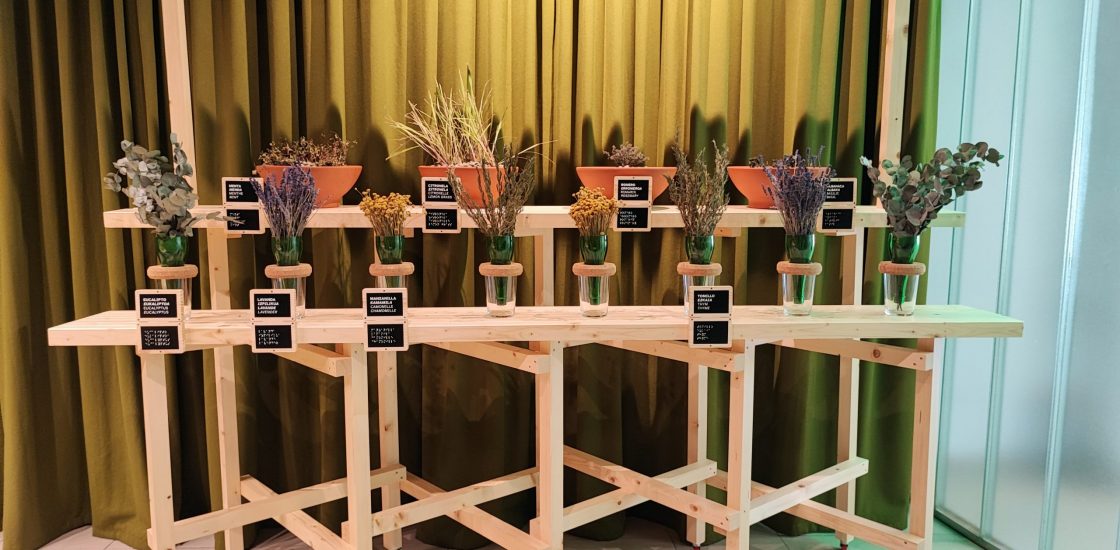Exhibition and spaces
The Basque Cider Museum is located on Kale Nagusia 48 in Astigarraga
The ticket to the museum includes the visit to the apple orchard, the interpretation centre, and the cider tasting for adults and apple wort for kids. The museum areas are open for visitors to enjoy on their own, but tours are ALWAYS GUIDED. We accompany you on the tour to show you all the curiosities about cider culture. We speak four languages: Basque, Spanish, English, and French.
The apple orchard
The Sagardoetxea apple orchard lets you observe and to study the different systems of cultivation in the same place, as well as a great number of varieties of apple from the Basque Country, the ways apples are picked, and the process of crushing and pressing them.
Exhibition area – interpretation centre
Exhibition area – aroma space
The museum space has a special area dedicated to the exploration of aromas, a unique space in which you will experiment and enjoy the different aromas related to the world of apples and nature: fruit, floral, natural aromas, etc. An evocative space where you can let your imagination run wild.
NOTE: visits to this area must be booked in advance.
This area is specially adapted for people with reduced mobility (PRM) and/or reduced vision, as it has information texts in Braille.
Tasting – tasting and shop
Sagardoetxea also has a store where you can buy all kinds of products derived from the apple, including a great variety of ciders, as well as: worts, liqueurs, vinegars, etc. Also gourmet products, souvenirs, promotions, documentation, and information related to the world of cider.
Buy tickets
Tickets to the museum include the tour of the apple orchard, the museum, and a cider tasting, as well as other apple products for adults and apple wort for children
BuyMuseum + Cider house
Take the tour of the museum with a cider house experience. Tour of the Museum + lunch or dinner with a typical menu
The perfect planDid you know...
The word “sagarra” (apple in Basque) is not of Indo-European origin, therefore its use existed in the Basque language before the arrival of Indo-European cultures (Celts, Greeks, Romans, etc.).













